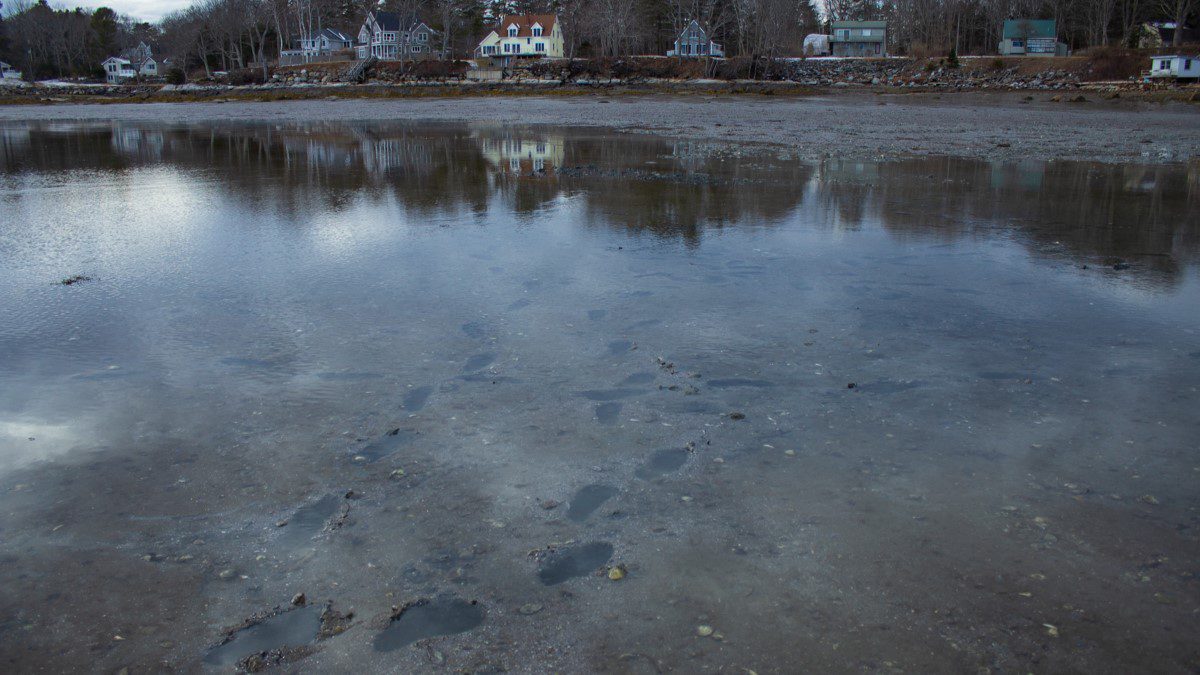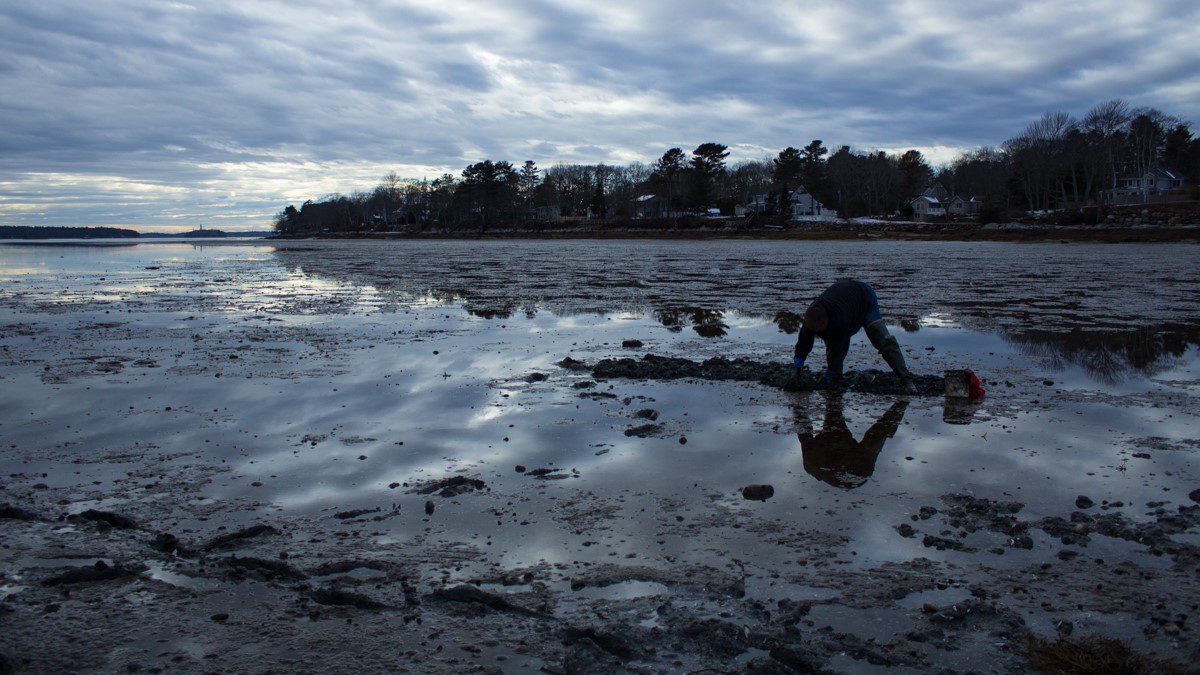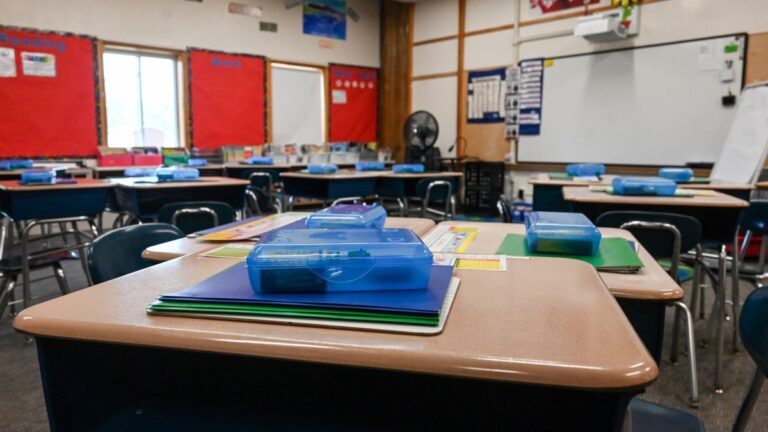A soon-to-be-released study from the University of Maine at Machias finds that Downeast clammers and lobstermen face steep barriers to healthcare access, despite greater risks of job-related injuries and other health issues that can sometimes lead to substance use disorders.
Tora Johnson, the lead author and an associate professor, said the study is one of the first of its kind to focus on Downeast Maine, where fisheries are big economic drivers.
“It’s pretty clear from the results here that harvesters are struggling to treat pain, and they experience a lot of it, and they get minimal help from the healthcare sector in treating that pain appropriately,” she said. “And so it’s pretty obvious that we need some new solutions.”
The study, now being drafted for publication, analyzed surveys and interviews with 83 shellfish harvesters and lobstermen, as well as healthcare providers, in Washington and Hancock counties in 2022.
It represents a small fraction of the fishermen working in these counties, which have the most active commercial harvesters across all species in the state. In 2021, there were around 2,000 fishermen in Washington County and 1,700 in Hancock County, which has fallen from the top spot in the past five years, according to state data. The vast majority fish for lobster, with soft-shell clams a distant second.
Johnson, who co-chairs the Environmental and Biological Sciences division at UMaine-Machias, said her study was done on a pilot scale that offers a model for future, larger research projects.
Most harvesters the team surveyed reported sustaining an injury while fishing in the preceding year. Especially common were back, neck, shoulder, arm and hand injuries, which could include frostbite, cuts and abrasions, or problems from falls or repetitive motions.
But as one respondent said, “unless it’s sticking out or very, very bloody, we work through it.” Some harvesters said they would stitch up their own injuries in the field, or use duct tape as a makeshift bandage. Self-prescribed rest or exercise were common treatments.
Fewer than one-third of harvesters surveyed said they visited a medical practitioner or received a prescription to treat on-the-job injuries. And 70% of the harvesters reported actively avoiding the doctor, primarily due to high costs or a lack of free time.
Instead, many respondents said they relied on Tylenol or other over-the-counter pain medications, which 19% reported taking “most days.” Self-medication with alcohol was also anecdotally common. Roughly a quarter of harvesters reported self-medicating with marijuana, opiates or other drugs, and researchers say this is likely an underestimate.
Certain kinds of injuries depended on the fishery, Johnson said. Lobstermen appeared more at risk of falls and injuries from heavy gear on their vessels, or could get hurt by rope or spiny bait.
Clammers tended to suffer from frostbite or neuropathy, which causes pain and tingling in the extremities. They could hurt their backs or legs trudging through deep mud, carrying heavy loads and frequently bending over, or cut themselves on shells or other debris in the mud when hand-digging for clams without gloves, risking dangerous infections without proper treatment.
‘Tip of an iceberg’
Johnson said fishers’ high risk of injury can create a slippery slope to addiction, comorbidities or accidental overdoses, all common themes in anecdotes relayed by participants. “Not every harvester ends up in those kinds of straits,” she said, but their jobs put them at greater risk.
“We also found a lot of frustration, sadness, anguish, broken marriages, bankruptcy, homelessness,” Johnson said. “The overdose(s) and the deaths that have been widely reported are the tip of an iceberg.”

Johnson noted that the study doesn’t make detailed conclusions about how prevalent different health issues are among fishermen. Instead it gives a sample of experiences, showing broad areas where changes in public health practices could help.
Those changes could include providing wound kits to fishermen, increasing first-aid supplies or mobile health units on working waterfronts, or deploying community health workers or navigators to help injured fishermen access appropriate treatments.
Programs to help harvesters access insurance at lower costs, especially earlier in their careers, could also help. Participants in the study reported that it’s common for harvesters to go without insurance due to high costs.
Johnson plans to get industry feedback on her research at the Maine Fishermen’s Forum in early March at Rockport. She hopes to work with state officials and advocacy groups on potential injury prevention programs, insurance reforms and other new resources.
A barrier to sustainability
The study focuses on ways healthcare providers can do more to help fishermen rather than putting the onus on fishermen themselves. She saw a need for cultural competency training to help doctors better communicate with fishermen and meet them on their own terms.
“Some providers were really on it, and they knew to arrange hours around the tides and they knew never to say to harvesters, ‘just rest,’ ” she said. “But some of them were, like, genuinely hostile and angry and belligerent about harvesters who didn’t follow their advice — and their advice often was, ‘just don’t fish.’ And they don’t understand that what they’re saying is, ‘just don’t feed your family.’ “
Injury and addiction are not the only risks putting pressure on Maine shellfish harvesters and their health. In the softshell clam fishery, harvesters face increasing difficulty accessing clamming grounds by land as new property owners buy up more of the shoreline. This can lead to longer walks to harvesting areas, or force clammers to come into the mudflats by boat, which means they may have to stay out in the elements longer to follow the tide cycle.
All of these changes, Johnson said, create more opportunities for injury and less time for treatment. Moreover, as The Maine Monitor reported in late January, the clam fishery is under heavy strain from climate change, as warming waters cause a boom in populations of clam-eating green crabs.
Johnson sees health struggles as a barrier to taking care of these fisheries in other key ways. Clammers who can’t afford medical care or begin to struggle with addiction may be less able to invest in or experiment with new harvesting techniques that, research says, may be necessary to make the sector sustainable.
Sign up here to receive The Maine Monitior’s newsletter, Downeast Monitor, that focuses on Washington County news.








